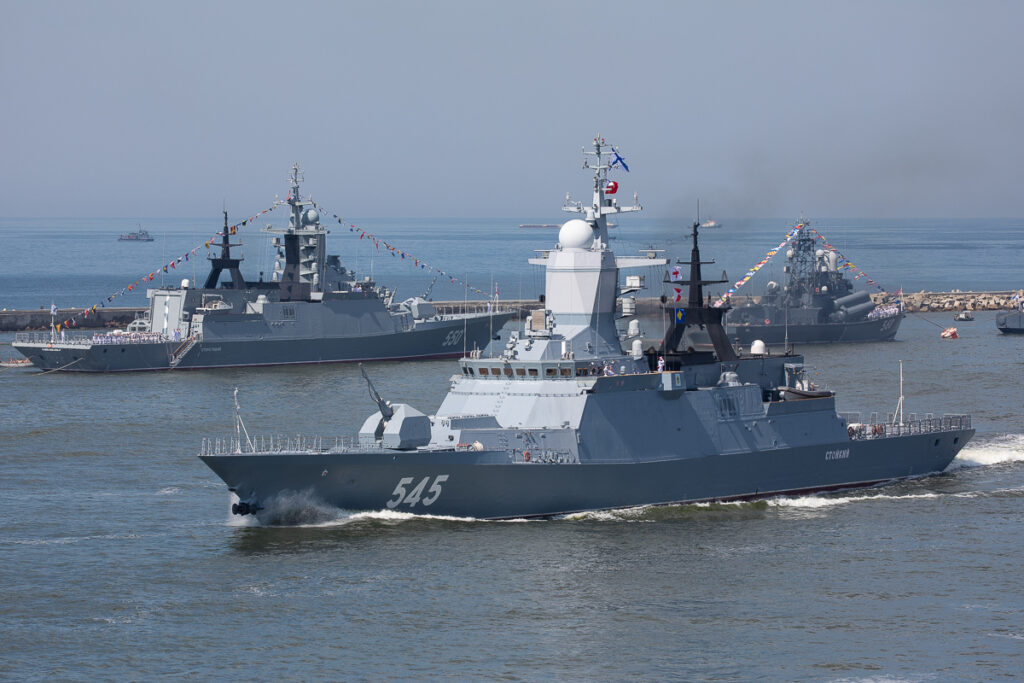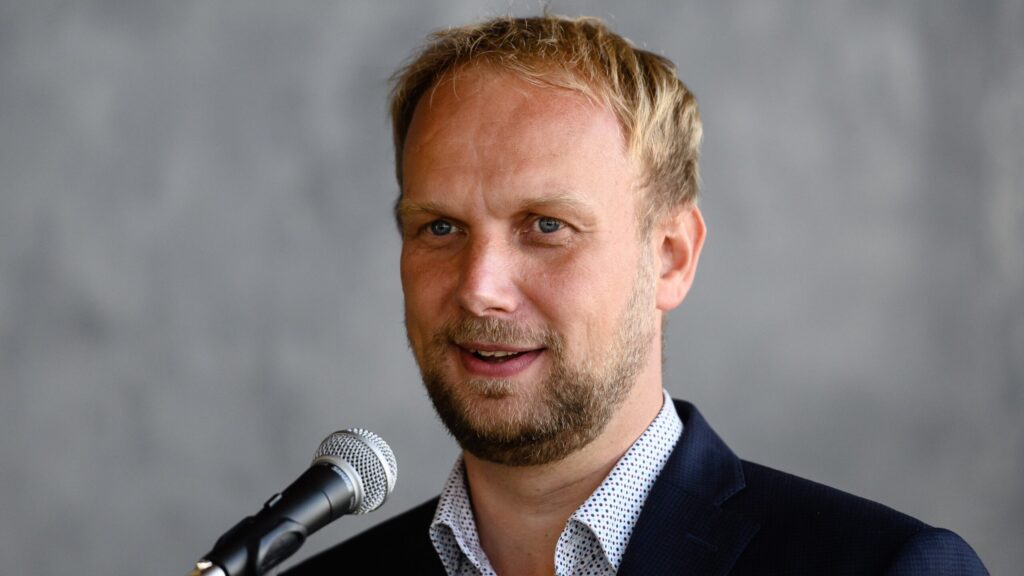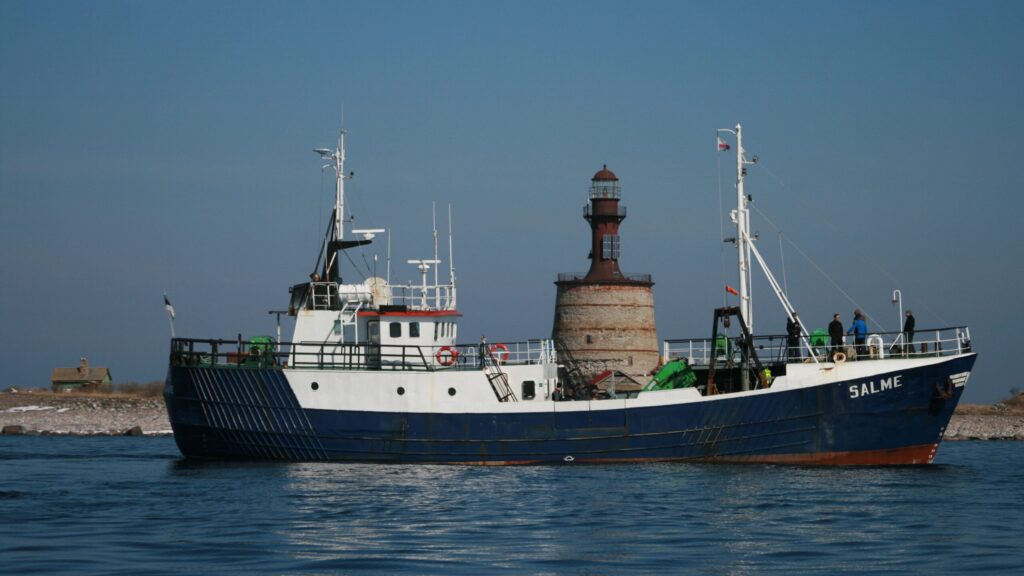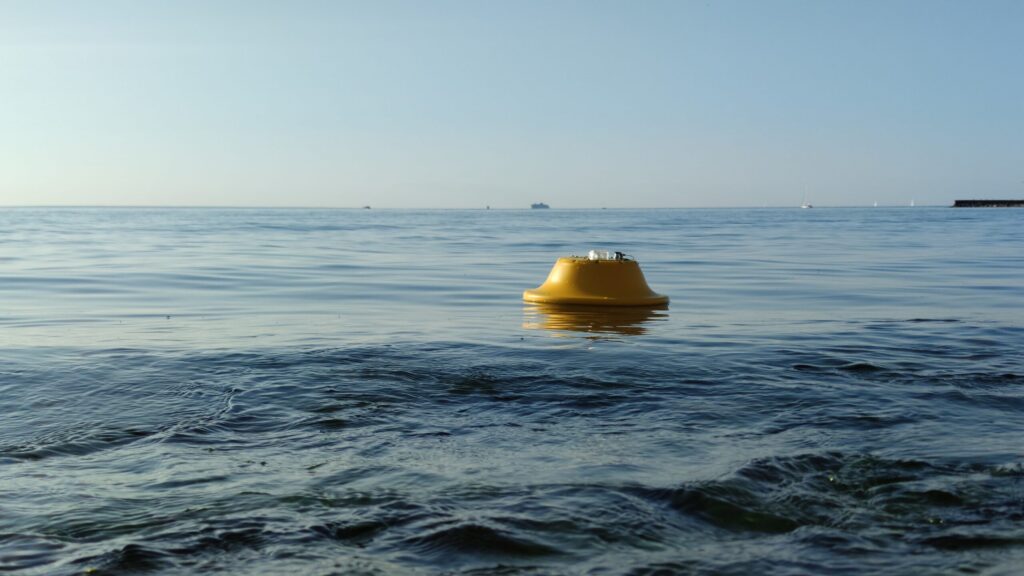A smart wave buoy developed by TalTech vanished from Estonian waters and reappeared in a Russian military base – without a single alarm; the incident lays bare Estonia’s limited maritime awareness and raises urgent questions about security in the Baltic Sea.
The Estonian version of this article was originally published on TalTech’s portal, Trialoog.
A smart wave buoy developed by Tallinn University of Technology – known as TalTech – was removed from Estonia’s exclusive economic zone in the Baltic Sea without a single recorded disturbance – and transported directly to a Russian military facility. The case underscores a critical question: does Estonia have sufficient awareness of what happens at sea, and the ability to respond in real time?
The wave buoy, deployed by TalTech’s Institute of Marine Systems near Hiiumaa, began behaving erratically in late April. It quickly became clear the issue was not caused by a storm or technical failure.
Analysis of hydrometeorological data, GPS signals, satellite imagery and other sources showed the device was no longer drifting naturally. It was being deliberately guided – with human intervention – towards Kaliningrad. The satellite connection was lost precisely at that location. In other words: an environmental monitoring device was taken from Estonia’s economic waters and brought to a Russian military site.

Unsurprisingly, the incident raises numerous questions around national response, security and navigational safety. But even more urgently, it reveals a painful truth: Estonia’s situational awareness in the Baltic Sea remains limited.
A stark reminder: Estonia’s marine monitoring and forecasting services need stronger support
“This is a harsh reminder that Estonian marine research – and the monitoring and forecasting services that go with it – need far more support and systemic development,” said Rivo Uiboupin, the director of the TalTech’s Institute of Marine Systems.
“Strange things happening in the Baltic Sea is no longer surprising. We’ve seen gas pipeline ‘malfunctions’, damage to communications cables, and now the targeted removal of an oceanographic measuring device. To me, this clearly shows that we do not adequately control what is happening in our nearby waters. It is a direct indication of insufficient maritime situational awareness,” Uiboupin added.
This, he argues, is precisely where science and national security must meet: science-based marine monitoring and forecasting services are not merely part of natural science – they are a critical component of Estonia’s strategic preparedness.

TalTech plans to install a new buoy in the same location soon, as the project requires continuous wave monitoring in the area. The new device will transmit its location via satellite, provided it remains operational and is not shut down.
Although the stolen buoy did not contain sensitive information, several weeks’ worth of raw data were lost – data that had been intended for research and development of marine forecasting services. Uiboupin emphasised that the incident once again demonstrates the importance of improving Estonia’s awareness of what is happening in the Baltic Sea and along its coast.
More attention needed for maritime situational awareness
The stolen buoy was not merely a floating device – it was a scientific instrument developed by TalTech researchers and students, officially named LainePoiss (WaveBoy), designed to collect wave data from the Baltic Sea. This kind of data is essential not only for real-time environmental monitoring, but also for ensuring safe navigation – and ultimately, for strengthening maritime situational awareness.
The buoy was part of a project to establish a network of continuous wave-monitoring stations in Estonian waters, funded by the Estonian Environmental Investment Centre and supported by the country’s Environment Agency and the Transport Administration. The goal is to support maritime activities with a steady data stream and to offer a more reliable picture of hydrometeorological conditions in the Baltic Sea.

While the network will help improve awareness, a full overview of what is happening in Estonia’s maritime territory remains a distant aspiration. “Our situational awareness could be significantly better – without it, we are not prepared for environmental pollution, navigation hazards or other emergencies,” Uiboupin noted.
The challenges surrounding marine research are often overlooked, he said – problems may be technical or security-related, ranging from poor weather to international tensions. This incident, in his view, clearly shows how important it is for all stakeholders to understand the risks that come with installing and operating such equipment.
Marine data analysis needs more experts
Simply collecting data is not enough to improve maritime awareness. It requires competent specialists capable of quickly and meaningfully interpreting information from various sources, making forecasts, and drawing conclusions that support decision-making and rapid response.
“The work of specialists must be supported by a digital tool that integrates real-time marine data, satellite images and model forecasts – a digital twin of maritime awareness,” Uiboupin explained.

If Estonia had a truly functional digital twin of the Baltic Sea, it could respond more effectively to a wide range of emergencies – be they oil spills, security incidents or otherwise. But achieving this requires more than just devices, servers and infrastructure – it also means developing human capital, including training the next generation of marine data analysts.
That is exactly what the Institute of Marine Systems is doing. TalTech’s Earth Systems, Climate and Technologies programme trains specialists capable of developing environmental monitoring and forecasting services, and making decisions based on large-scale marine data analysis. According to Uiboupin, it remains one of the few curricula where such topics are addressed systematically and practically.
Studying natural sciences and engineering can thus be part of the solution. Improving maritime situational awareness through better monitoring and forecasting begins with a simple truth: knowledge does not emerge on its own. It must be created, refined, and applied. And sometimes, it takes the theft of a scientific instrument to remind us of that.

